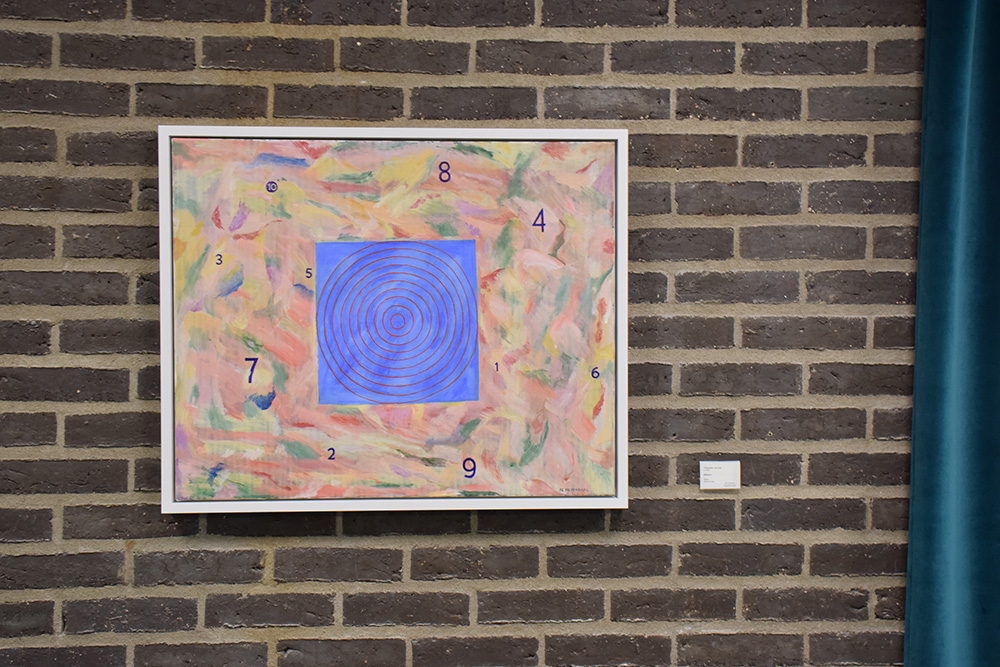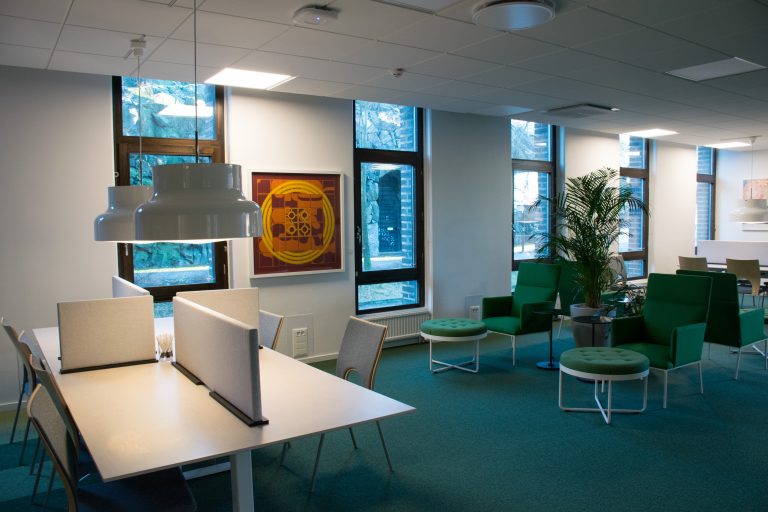For TLV (Tandvårds- och läkemedelsförmånsverket), the Dental and Pharmaceutical Benefits Agency’s premises in Stockholm, Magnus Mattsson has created a collection of some 20 artworks, including sculpture, painting, graphics, craft and installations. In his selection, Magnus has attempted to capture a sense of science and medicine, which may be related to the activities of TLV. To a great extent, the collection is graphic, including several works that are rich in contrast, abstract and with a certain disruption, exemplified, by among others, Joakim Ojanen’s expressive, hand-modelled sculpture installed in the entrance.











Magnus has planned the collection so that all the works function well together, and adapt to not only the physical environment but also to the overall context of what TLV is and does. He made plans for the hanging of the works, but regarded them as guidelines rather than something to be slavishly adhered to. Once a hanging begins unexpected things always occur that one has to work around, be it walls that turn out to be of sections of glass or electrical outlets and cable ducts mounted exactly where a work was planned to be hung. In these cases it is important to be creative and design-minded in order to adapt to the new framework for the project.
Magnus explains his working method:
“Visiting TLV’s newly renovated premises in the company of the art is an exciting adventure. Many of the art collection’s spatial meetings have thus far only taken place in my imagination. On my last visit, construction work was ongoing and many of the colour schemes and material choices had not been made, nor even where all the walls would be. Hanging the art was like a live improvisation with some preconceived ideas. The spaces speak to me and select their own artworks, we bicker a bit until we reach consensus on the correct prioritisation and distribution of the works.”
TLV’s premises are located in the Trygg Hansa building, designed by Anders Tengbom and Stefan Salamon and erected in the mid-1970s. The building is listed by Stockholm City Museum and much of the original design remains: dark brick walls and columns, ceilings of multiple rows of aluminium profiles, and the open area at the entrance, which extends from the ground floor up to the top of the building. The large, spacious entrance comprises a site-specific work, installed when the building was built. Spanning several floors, almost all the way from the ceiling and down to the first basement floor, the work is designed as a folded map or perhaps a cave wall. Along the wall, rivulets of water trickle down into a stone-paved collecting pond with green plants. During the hanging of the collection, Magnus related to this wall without knowing who had designed it. Much later, at the research stage prior to the viewing of the already hung works, it turned out that the artwork was created by Leif Bolter and Björn S. Jonsson, the latter being represented in Magnus’s collection for TLV with a painting. A somewhat incredible coincidence, as Magnus found the painting among the artworks that had been returned to Public Art Agency Sweden earlier in the year. When hanging the collection he had no idea that it had such a strong connection to the building. “It was as if it wanted to go there.”
Visitors to TLV are immediately faced with this environment, which continues into the entrance of TLV where the first work in the collection has been placed. It is an installation by Slobodan Zivic, comprising both a visual work and an audio loop, developed in collaboration with Johan Karlsson, better known as “Familjen”. The sound is an instrumental piece, like a calm, electronic pulse. From the entrance, glass doors and a glass section lead to TLV’s spaces and a second hall, a meeting place with a coffee machine and doors leading to conference rooms. These spaces are newly renovated and painted white, with a dark green stone floor and feature walls in hues of green and blue.
Visitors to the hall encounter Joakim Ojanen’s sculpture Måndag hela veckan [Monday all Week] and J-E Frisendahl’s painting Måltavla [Target]. Ojanen’s sculpture is composed of various ceramic figures displaying a wide spectrum of emotions, as if the work depicts different aspects and moods of a single individual. The figures are installed in what looks like a wooden art shipping crate. The figures have their individual spaces as the crate is divided in the manner of a pill organiser, with a different emotion in each compartment.
In the conference rooms and the more public areas of TLV’s premises, Magnus has elaborated with colours and motifs with an aesthetic imprint that is immediately related to the spaces as well as displaying a symbolic connection to pharmaceutical manufacturing; there are depictions of various types of plants whose colours interact with the interior. Following this theme, there is a work by CO Hultén that represents a serpent: the symbol for medicine and healthcare.
In the corridor appears Cecilia Darle’s series of photographs: numerous pictures of condensation trails produced by aircraft cruising at high altitudes. The photographs have been installed so that one trail joins onto the next one, which means that the images have been asymmetrically hung to create a continuous motif.
Further into the space in one of the corridors is the location of Darle’s installation Litet Skalv (Tiny Tremor), which extends along the walls of the corridor. The work comprises several parts that follow a line, a crack. The crack extends out across the surface, through various everyday objects including a cup and a sheet of paper. Darle invites us to tag along in her linear exploration of small details, which otherwise might have disappeared into the periphery of quotidian life.
In TLV’s library, Magnus has paired some of the TLV’s posters with two artworks by Beck & Jung. The posters are from Moderna Museet’s exhibition Hilma af Klint – A Pioneer of Abstraction. Beck & Jung were also pioneers in their field, computer and digital prints, and active some hundred years after the birth of Hilma af Klint (1862-1944). The library has become the meeting place of artistic innovators, who dared to challenge norms and break new ground.
